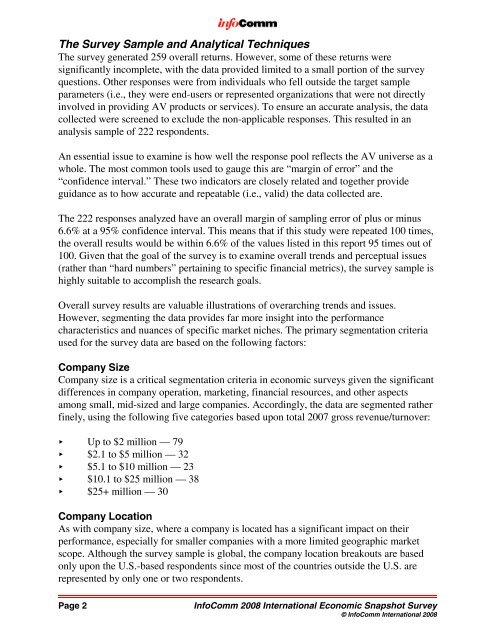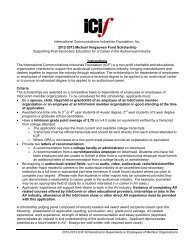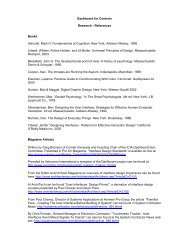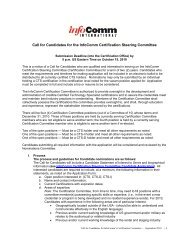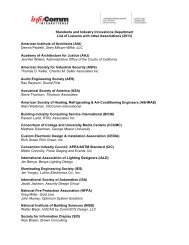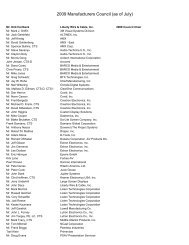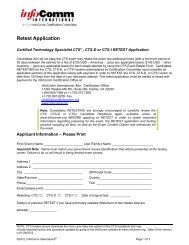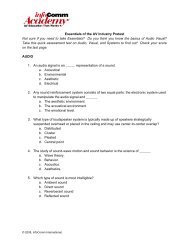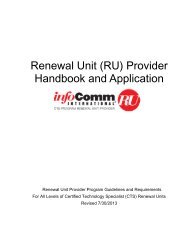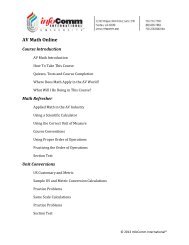September 2008 Economic Snapshot Survey - InfoComm
September 2008 Economic Snapshot Survey - InfoComm
September 2008 Economic Snapshot Survey - InfoComm
Create successful ePaper yourself
Turn your PDF publications into a flip-book with our unique Google optimized e-Paper software.
The <strong>Survey</strong> Sample and Analytical Techniques<br />
The survey generated 259 overall returns. However, some of these returns were<br />
significantly incomplete, with the data provided limited to a small portion of the survey<br />
questions. Other responses were from individuals who fell outside the target sample<br />
parameters (i.e., they were end-users or represented organizations that were not directly<br />
involved in providing AV products or services). To ensure an accurate analysis, the data<br />
collected were screened to exclude the non-applicable responses. This resulted in an<br />
analysis sample of 222 respondents.<br />
An essential issue to examine is how well the response pool reflects the AV universe as a<br />
whole. The most common tools used to gauge this are “margin of error” and the<br />
“confidence interval.” These two indicators are closely related and together provide<br />
guidance as to how accurate and repeatable (i.e., valid) the data collected are.<br />
The 222 responses analyzed have an overall margin of sampling error of plus or minus<br />
6.6% at a 95% confidence interval. This means that if this study were repeated 100 times,<br />
the overall results would be within 6.6% of the values listed in this report 95 times out of<br />
100. Given that the goal of the survey is to examine overall trends and perceptual issues<br />
(rather than “hard numbers” pertaining to specific financial metrics), the survey sample is<br />
highly suitable to accomplish the research goals.<br />
Overall survey results are valuable illustrations of overarching trends and issues.<br />
However, segmenting the data provides far more insight into the performance<br />
characteristics and nuances of specific market niches. The primary segmentation criteria<br />
used for the survey data are based on the following factors:<br />
Company Size<br />
Company size is a critical segmentation criteria in economic surveys given the significant<br />
differences in company operation, marketing, financial resources, and other aspects<br />
among small, mid-sized and large companies. Accordingly, the data are segmented rather<br />
finely, using the following five categories based upon total 2007 gross revenue/turnover:<br />
< Up to $2 million — 79<br />
< $2.1 to $5 million — 32<br />
< $5.1 to $10 million — 23<br />
< $10.1 to $25 million — 38<br />
< $25+ million — 30<br />
Company Location<br />
As with company size, where a company is located has a significant impact on their<br />
performance, especially for smaller companies with a more limited geographic market<br />
scope. Although the survey sample is global, the company location breakouts are based<br />
only upon the U.S.-based respondents since most of the countries outside the U.S. are<br />
represented by only one or two respondents.<br />
Page 2<br />
<strong>InfoComm</strong> <strong>2008</strong> International <strong>Economic</strong> <strong>Snapshot</strong> <strong>Survey</strong><br />
© <strong>InfoComm</strong> International <strong>2008</strong>


